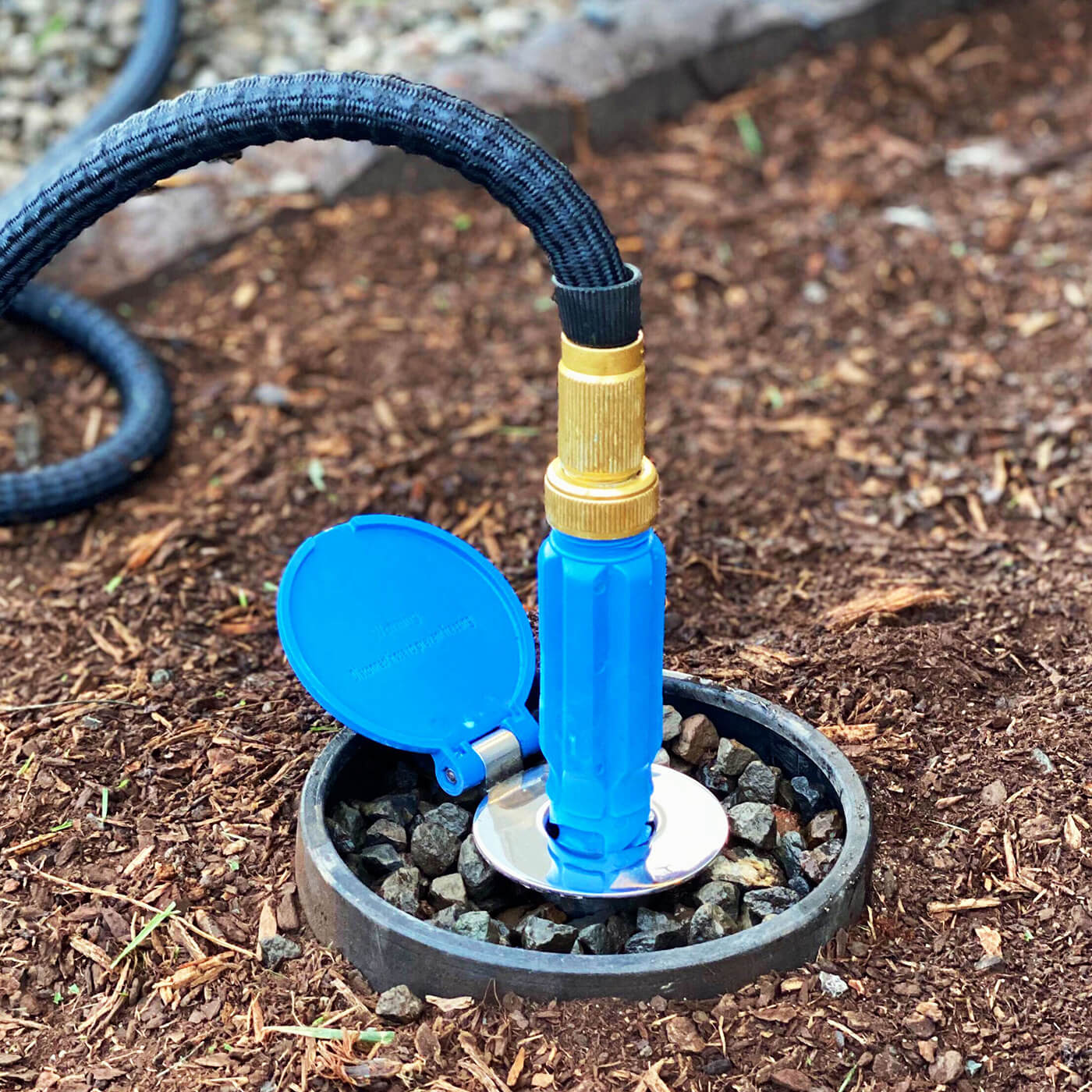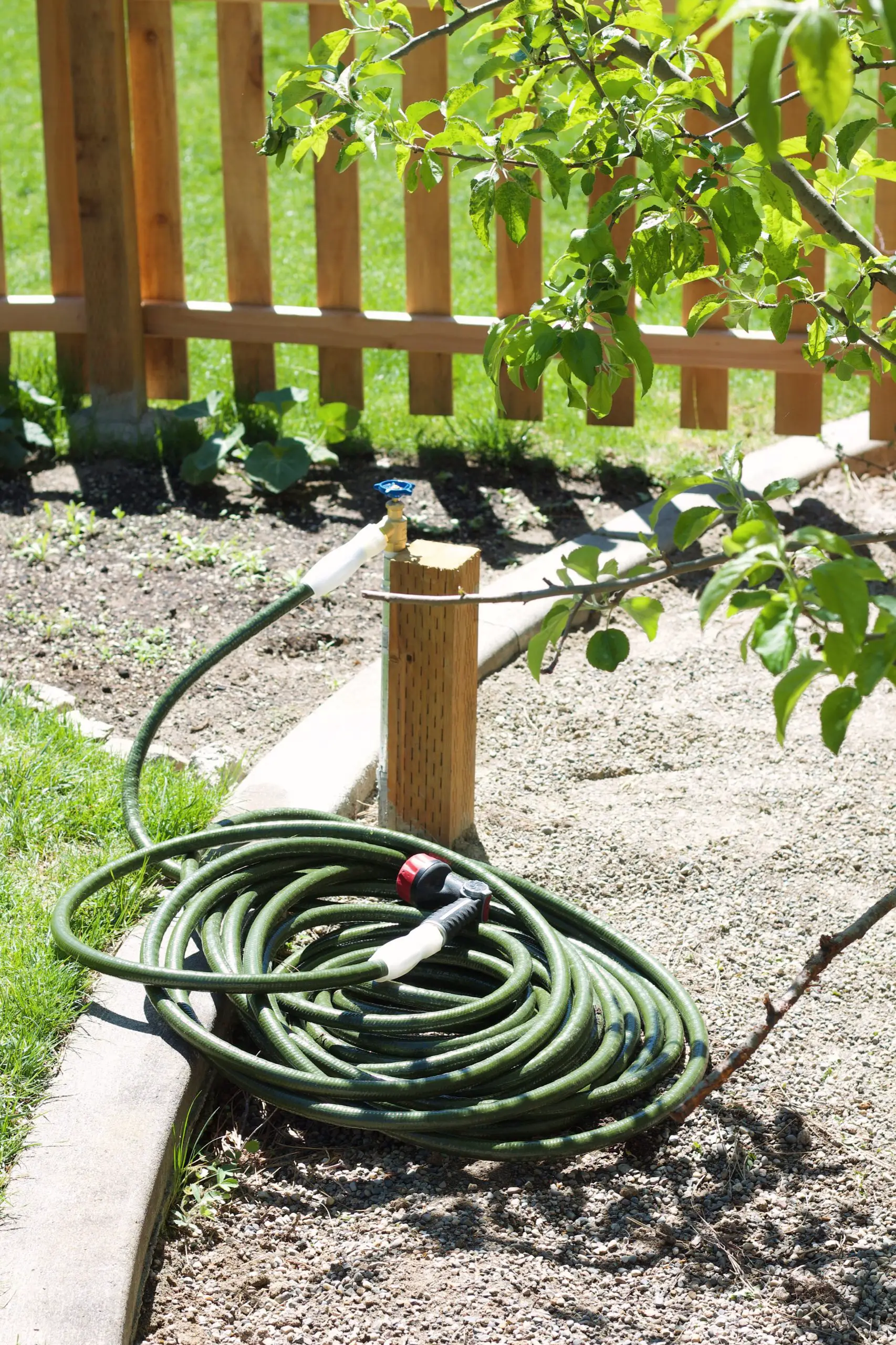To bury a garden hose and convert it to an underground water hose, dig a trench, place the hose in it, cover it with soil, and ensure it is well-supported to prevent damage. This allows for easy access to water without the hassle of a visible hose in your garden.
An underground water hose offers several advantages, including improved aesthetics and reduced trip hazards. It also keeps the hose protected from sun exposure, reducing the likelihood of cracks and leaks. Additionally, burying the hose helps maintain a neat and organized garden while ensuring ease of use for watering plants or cleaning outdoor spaces.
In this article, we will discuss the step-by-step process of burying a garden hose and converting it to an underground water hose, allowing you to enjoy a tidy and functional garden.

Credit: www.aquorwatersystems.com
Benefits Of Using An Underground Water Hose
Increase Available Garden Space
Converting a garden hose into an underground water hose can bring numerous benefits to your outdoor space. One of the major advantages is the increase in available garden space. By burying the water hose underground, you can free up precious surface area that would have been occupied by the hose.
This additional space can be used for planting flowers, shrubs, or even creating a cozy seating area where you can relax and enjoy your garden.
- Maximize the utilization of garden space
- Create a more organized and clutter-free environment
- Expand your gardening possibilities
Improve Aesthetic Appeal Of Garden
An underground water hose not only provides functionality but also enhances the visual appeal of your garden. By hiding the hose underground, you can enjoy a seamless and aesthetically pleasing garden without the eyesore of exposed hoses. The smooth, unobtrusive look of the underground hose will contribute to a more polished and well-maintained garden design.
- Maintain a clean and tidy garden appearance
- Avoid visual distractions caused by exposed hoses
- Showcase the beauty of your plants and landscaping
Prevent Tripping Hazards
When it comes to garden safety, a buried water hose offers a significant advantage by eliminating tripping hazards. Traditional hoses lying across your lawn or garden can pose a risk, especially for children, pets, or elderly individuals. With an underground water hose, you can say goodbye to tripping accidents and create a safe environment for everyone to enjoy.
- Ensure the safety of children, pets, and visitors
- Reduce the risk of injuries caused by tripping over hoses
- Maintain a hazard-free garden for stress-free outdoor activities
By converting your garden hose into an underground water hose, you can take advantage of the increased available garden space, enhance the aesthetic appeal of your garden, and eliminate the risk of tripping hazards. Embrace the benefits of this innovative solution and transform your outdoor space into a stunning and safe haven.
Step-By-Step Guide To Transforming Your Garden Hose
If you’re tired of tripping over your garden hose or looking for a more streamlined and organized watering solution, converting it into an underground water hose could be the answer. By burying the hose, you can eliminate clutter in your yard while maintaining easy access to water for your plants.
In this step-by-step guide, we’ll walk you through the process of transforming your garden hose into an underground water hose.
Select The Right Location For The Underground Water Hose
Before you start digging, it’s important to choose the perfect spot for your underground water hose. Consider the following factors:
- Accessibility: Select an area that is easily accessible and convenient for watering your garden.
- Sunlight exposure: Ensure that the chosen location receives sufficient sunlight for your plants’ needs.
- Obstacles: Avoid areas with large roots, rocks, or other obstructions that can hinder the digging process.
Dig A Trench For The Hose
Once you’ve identified the ideal location, it’s time to dig a trench to house the hose. Follow these steps:
- Measurements: Determine the length of the hose and mark the trench accordingly.
- Width and depth: Dig a trench that is wide and deep enough to accommodate the hose comfortably.
- Sloping: Consider creating a gentle slope along the trench to facilitate water flow.
Prepare The Garden Hose For Underground Installation
Before burying the hose, it’s essential to prepare it properly. Follow these guidelines:
- Cleaning: Clean the hose thoroughly to remove any dirt or debris that may accumulate over time.
- Trimming: If necessary, trim the hose to the desired length using a sharp utility knife.
- Sealing: Seal the ends of the hose securely to prevent water leakage.
Bury The Hose In The Trench
Now that your hose is ready, it’s time to bury it in the trench. Here’s what you need to do:
- Laying the hose: Carefully place the garden hose inside the trench, ensuring it lies flat without any twists or kinks.
- Covering the hose: Gradually fill the trench with soil, covering the hose completely as you go.
- Compact the soil: Press down firmly on the soil to eliminate any air pockets and create a stable foundation.
Connect The Hose To Water Source And Garden Fixtures
The final step is to connect the underground water hose to your water source and garden fixtures. Follow these instructions:
- Attach fittings: Connect the hose to a suitable connector that leads to your water source.
- Connect garden fixtures: Attach sprinklers or other garden fixtures to the hose as needed.
- Test for leaks: Turn on the water and check for any leaks or issues with the hose or connections.
By following this step-by-step guide, you can successfully transform your garden hose into an underground water hose, creating a tidy and efficient watering system for your garden. Enjoy the benefits of a clutter-free yard while providing your plants with the water they need to thrive.
Tips For Maintaining And Using An Underground Water Hose
Regularly check for leaks or damage:
- Inspect the underground water hose on a regular basis to ensure there are no leaks or damage.
- Look for any visible cracks, leaks, or signs of wear and tear in the hose.
- If you notice any issues, repair or replace the hose immediately to prevent water wastage and maintain proper functionality.
Use a backflow preventer to protect water supply:
- Install a backflow preventer to keep your water supply safe and avoid contamination.
- A backflow preventer will prevent any water from flowing back into the main water supply, ensuring the water in your hose remains clean and uncontaminated.
- Regularly check the backflow preventer to ensure it is functioning properly and replace it if necessary.
Properly winterize the underground hose to avoid freezing:
- Before the winter season, it is crucial to properly winterize your underground water hose.
- Shut off the water supply and drain any remaining water from the hose.
- Disconnect and store the hose in a dry and sheltered location to avoid freezing and potential damage.
- Consider using insulated hose covers or heat tapes to protect the hose during extremely cold temperatures.
Remember, the key to maintaining and using an underground water hose successfully lies in regular inspections, the installation of a backflow preventer, and proper winterization. By following these tips, you can ensure the longevity and efficient operation of your underground water hose.
Conclusion
Burying a garden hose and converting it to an underground water hose can be an effective solution for maintaining a neat and organized garden. By following the steps outlined in this blog post, you can ensure a seamless transition from above-ground hoses to a hidden water supply system.
This not only improves the aesthetics of your outdoor space but also minimizes the risk of tripping hazards and damage to the hose itself. Additionally, by protecting the hose from harsh weather conditions and uv rays, you can extend its lifespan and save money in the long run.
Remember to consider factors such as location, depth, and material when burying your hose, and invest in high-quality fittings to prevent leaks and ensure efficient water flow. With a bit of effort and attention to detail, you can have an efficient and visually appealing underground water hose system that will serve you well for years to come.


![Why Put Sand On Grass? [Unlock the Secrets of Sand]](https://outsidegr.com/wp-content/uploads/2023/07/Why-Put-Sand-On-Grass-768x514.jpg)




